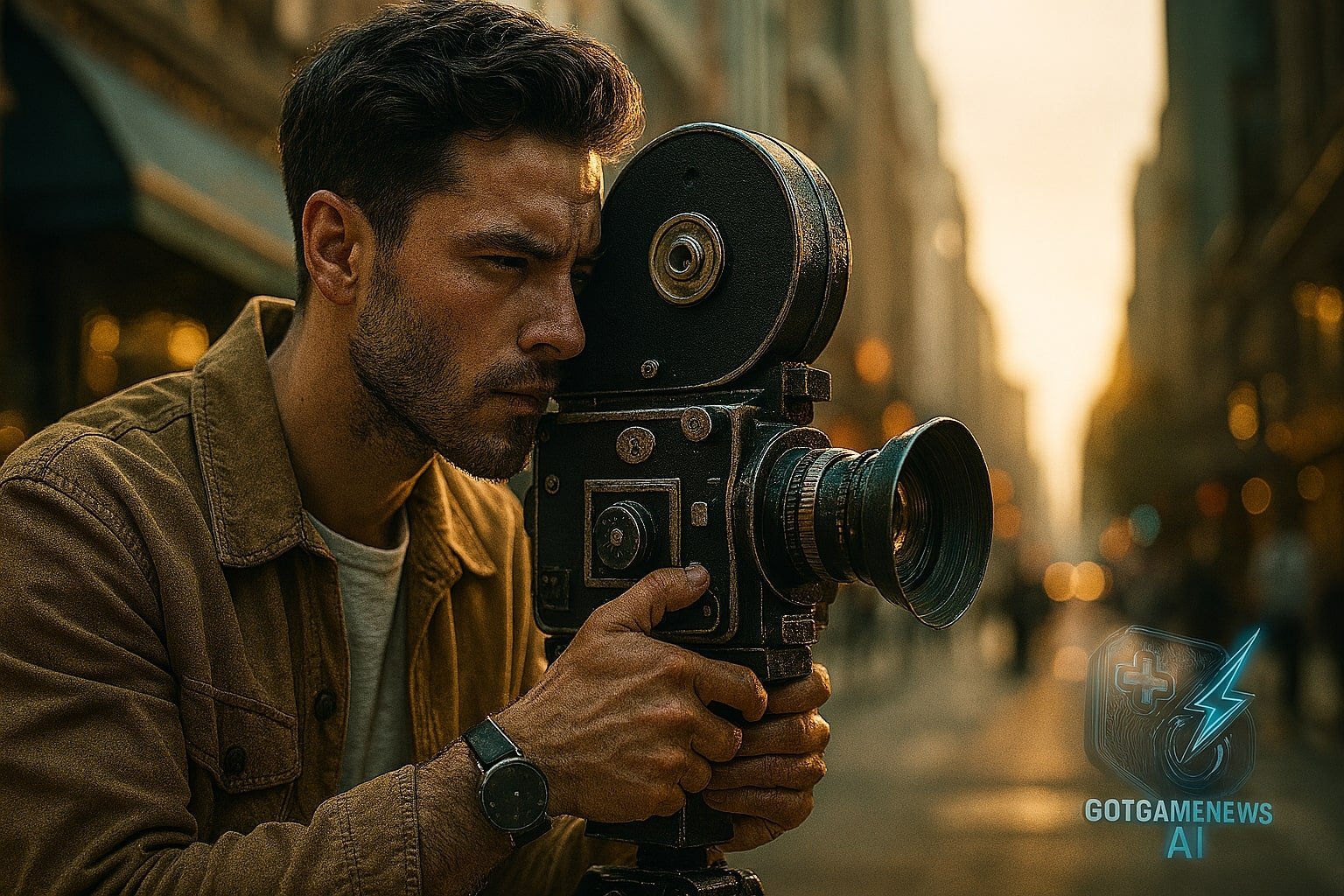Google’s latest AI video generator, Veo 3, doesn’t just make good clips. It makes videos that look, sound, and move like they were shot by a professional filmmaker — with actors who never existed and scenes that were never filmed.
Veo 3 marks a major leap forward in AI-generated video, combining photorealistic visuals with synchronized audio, physical realism, and precise control over camera angles and style. It’s so good, in fact, that some clips are already circulating without clear disclosure — sparking new concerns about deepfakes, consent, and the authenticity of online media.
This isn’t just a tech flex. It’s a turning point.
🎥 What Makes Veo 3 So Realistic?
Google’s Veo 3 model stands out for how fully it embraces video as a cinematic medium — not just a sequence of pretty frames. Let’s break down the key innovations:
1. Native Audio Integration
Most previous AI video tools required silent clips — sound had to be added manually, usually by a human editor. Veo 3 changes that by generating synchronized audio from the start. Dialogue, ambient sound, footsteps, even rustling leaves — all generated by the AI and lip-synced to the on-screen characters.
This tight coupling of visuals and audio is what makes Veo 3 feel alive. You’re not just watching; you’re hearing the world it creates in real time.
2. Physics-Aware Rendering
Veo 3 doesn’t just guess how things look. It understands how they move — water ripples naturally, hair sways with wind, light bounces off surfaces believably. This is the result of what Google describes as “physics-informed video generation,” where movement follows real-world dynamics rather than simple interpolation.
Compare it to earlier tools like Runway or Pika, which often struggled with fluid motion or consistent lighting. Veo 3 looks more like something rendered in a Hollywood studio than a generative toy.
3. Prompt Control with Cinematic Precision
Through integrations with Google’s Flow and Gemini tools, Veo 3 offers filmmakers — or just prompt-writers — detailed control over camera angles, zoom levels, color grading, and editing style. Users can reference specific directors or film genres (“like a Wes Anderson intro” or “dark cyberpunk noir”) and get scenes that match.
This level of stylization makes Veo 3 more than just a “video-from-text” generator. It’s a potential filmmaker’s tool, letting users iterate quickly in pre-visualization or even final delivery.
4. High Resolution and Frame Consistency
Google claims Veo 3 can output up to 1080p (and internally tests 4K), with long-form consistency across complex scenes — something notoriously difficult for current-gen AI. That means characters stay recognizable, settings remain coherent, and motion doesn’t collapse over time.
For real-world use cases — advertising, music videos, education, gaming — that consistency could be game-changing.
🧠 Under the Hood: What’s Driving This Leap?
Veo 3 likely builds on a stack of innovations across Google DeepMind and Google Research:
- Transformer-based video diffusion models with latent representations for speed and flexibility.
- Audio-video co-training, allowing models to learn correlations between lip movement, ambient noise, and environmental cues.
- Fine-tuned control modules, possibly using reinforcement learning to better match user intent and cinematic norms.
- Massive proprietary datasets, sourced (controversially) from YouTube and other Alphabet-owned media — giving the model exposure to every imaginable genre, tone, and motion style.
It’s the scale and structure of these systems — not just the model architecture — that makes Veo 3 a generational jump.
⚖️ Realism Brings Real Risks
The more realistic AI videos become, the less we can trust what we see. And Veo 3 pushes that line hard.
🔍 1. Deepfake Danger
With synced audio and humanlike performance, Veo 3 could easily be used to fake a speech, impersonate someone, or spread disinformation. Google says Veo includes SynthID watermarking to track AI origin — but that only works if platforms enforce detection and disclosure. Right now, many don’t.
🤖 2. Consent and Data Ethics
How was Veo trained? Google hasn’t fully disclosed its dataset sources, but if it includes public video (like YouTube), creators may have unknowingly helped train a tool that could now replace their work — without payment or permission. This echoes the wider copyright storm facing generative AI.
🎨 3. Creative Displacement
Filmmakers and animators already face pressure from studios eager to cut costs. If tools like Veo 3 can generate entire scenes in seconds, what happens to jobs in storyboarding, VFX, or location scouting? These aren’t hypotheticals — unions like SAG-AFTRA and IATSE are already negotiating protections.
📜 4. Policy Vacuum
Regulators are behind. The EU’s AI Act and U.S. FTC efforts mention “synthetic media,” but enforcement is lagging. Without clear standards for disclosure, watermarking, and usage rights, we’re heading toward a reality where AI-generated video can shape public opinion without scrutiny.
🚀 What Comes Next?
Veo 3 is currently in public preview via Google Cloud’s Vertex AI platform — mostly accessible to enterprise users and select creators. But Google has hinted that more general access could roll out soon, especially as competition heats up with OpenAI, Meta, and Stability AI all developing similar tools.
Expect rapid developments over the next 6–12 months:
- Longer clips, possibly minutes in length
- 4K rendering, suitable for broadcast or theatrical use
- Live prompt editing, allowing real-time direction like in a video game
- AI-native filmmaking tools, blending scriptwriting, storyboarding, editing, and sound design
In short, Veo 3 isn’t just a model. It’s the foundation of a new video creation stack — one where human input may shift from camera operation to prompt curation.
💡 Final Thoughts
Google’s Veo 3 is a marvel — a technical achievement that brings us closer to real-time, AI-powered storytelling. But with that power comes responsibility. The realism is so convincing, the outputs so seamless, that we’re crossing a threshold where seeing is no longer believing.
Platforms, policymakers, and the public need to catch up — fast. Because if Veo 3 shows us anything, it’s that synthetic video is no longer a gimmick. It’s here, it’s real, and it’s rewriting what we consider real.
PS: Why Authenticity Still Matters in an AI-Generated World
As tools like Veo 3 make it easier than ever to create high-quality content on demand, one thing becomes scarcer: authenticity.
When everyone can generate a movie-quality video in seconds, the value of human-made, intentional, and verifiablecontent rises dramatically. As GotGameNews recently argued, “authenticity becomes the rarest currency” in a flooded media ecosystem.
AI doesn’t care about lived experience, emotional nuance, or context. It creates what’s statistically likely — not what’s personally meaningful. That means audiences will increasingly seek out work that signals real effort, real voices, and real stakes. For creators, showing your process may matter as much as showing your product.
This isn’t just about style; it’s about trust. When deepfakes and synthetic media become indistinguishable from real footage, authenticity is no longer a given. It’s a signal — one that platforms, publishers, and creators will need to prove, not just claim.





